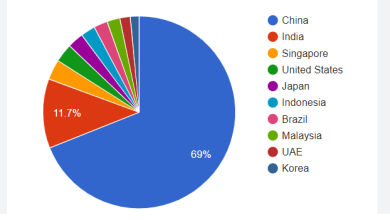The Art of the Best Website Design: Essential Elements and Trends

Creating the best website design is a blend of art and science, requiring a keen understanding of aesthetics, user experience (UX), and the latest web technologies. An exceptional website design not only captures the attention of visitors but also ensures that they stay engaged, navigate easily, and find what they need. This article explores the key elements that constitute the best website design, discusses current trends, and provides practical tips to help you create a compelling online presence.
Key Elements of the Best Website Design
User-Centric Design
Understanding the Audience: The best website designs start with a deep understanding of the target audience. This involves researching user demographics, preferences, behaviors, and needs.
User Personas: Creating detailed user personas helps in designing a website that caters specifically to the needs and expectations of different user groups.
User Experience (UX): UX focuses on creating a seamless and enjoyable experience for users. This includes intuitive navigation, fast load times, and a clear, logical structure.
Aesthetic Appeal
Visual Hierarchy: Effective use of visual hierarchy guides users’ attention to the most important elements on the page, such as calls to action (CTAs), key information, and navigation links.
Color Scheme: A well-chosen color palette enhances the aesthetic appeal and reinforces the brand identity. Colors should be consistent with the brand and used to evoke the desired emotions.
Typography: The choice of fonts plays a crucial role in readability and the overall look and feel of the website. A combination of fonts can be used to create visual interest while maintaining consistency.
Imagery and Graphics: High-quality images, illustrations, and graphics can make a website visually appealing and engaging. These elements should be relevant and support the content.
Responsive Design
Mobile-First Approach: With the majority of web traffic coming from mobile devices, a mobile-first design ensures that the website looks and functions well on smaller screens.
Adaptive Layouts: Responsive design involves creating layouts that adapt to different screen sizes and orientations, providing a consistent user experience across devices.
Functionality
Navigation: Clear and intuitive navigation helps users find information quickly and easily. Menus, links, and buttons should be logically organized and easy to use.
Performance: Fast load times are essential for user satisfaction and SEO. Optimizing images, leveraging browser caching, and minimizing code can improve performance.
Accessibility: A website should be accessible to all users, including those with disabilities. This includes using alt text for images, providing keyboard navigation, and ensuring color contrast.
Content Quality
Relevance and Value: Content should be relevant to the target audience and provide value. This includes informative articles, engaging videos, and useful resources.
Clarity and Readability: Content should be clear, concise, and easy to read. Using headings, bullet points, and short paragraphs can improve readability.
SEO Optimization: Content should be optimized for search engines with relevant keywords, meta tags, and quality backlinks to improve visibility and attract organic traffic.
Current Trends in Website Design
Minimalism
Simplicity: Minimalist design focuses on simplicity, removing unnecessary elements to create a clean and uncluttered look.
Whitespace: Effective use of whitespace (or negative space) helps to highlight important content and improve readability.
Bold Typography: Using bold and large fonts as focal points can create a striking visual impact and guide users’ attention.
Dark Mode
Visual Comfort: Dark mode reduces eye strain and can enhance the viewing experience, especially in low-light environments.
Aesthetic Appeal: Dark mode can create a modern and sophisticated look, making certain design elements stand out more prominently.
Micro-Interactions
User Engagement: Micro-interactions are small animations or design elements that respond to user actions, such as hovering, clicking, or scrolling. They enhance user engagement and provide feedback.
Subtle Animations: Thoughtful use of animations can make interactions more intuitive and enjoyable without overwhelming the user.
Asymmetrical Layouts
Dynamic Design: Asymmetrical layouts break away from traditional grid patterns to create a more dynamic and visually interesting design.
Balance: While asymmetry adds creativity, it’s important to maintain balance so that the design doesn’t appear chaotic or disjointed.
3D Elements and Immersive Experiences
Depth and Realism: Incorporating 3D elements, parallax scrolling, and immersive multimedia experiences can add depth and realism to the website.
Interactive Content: Interactive elements such as quizzes, polls, and virtual tours can engage users and make the website more memorable.
Practical Tips for Creating the Best Website Design
Define Clear Objectives
Before starting the design process, define the primary objectives of the website. Whether it’s to sell products, generate leads, or provide information, having clear goals will guide the design decisions.
Prioritize Usability
Usability should be at the forefront of your design strategy. Conduct usability testing to identify and fix any issues that could hinder the user experience.
Focus on Branding
Ensure that the design reflects the brand’s identity and values. Consistent use of colors, fonts, and imagery reinforces the brand and builds trust with users.
Optimize for SEO
Integrate SEO best practices from the start. Use relevant keywords, optimize meta tags, and create high-quality content to improve search engine rankings.
Test and Iterate
Design is an iterative process. Regularly test the website on different devices and browsers, gather user feedback, and make necessary improvements to enhance performance and user satisfaction.
Stay Updated with Trends
Web design trends evolve rapidly. Stay updated with the latest trends and technologies to keep your website modern and competitive.
Collaborate with Professionals
Working with experienced web designers, developers, and SEO experts can significantly enhance the quality of your website. Professional collaboration ensures that all aspects of design and functionality are top-notch.
Conclusion
The best website design is a harmonious blend of aesthetics, functionality, and user experience. It requires a deep understanding of the target audience, a commitment to usability, and a keen eye for detail. By incorporating current design trends and following best practices, you can create a website that not only looks great but also delivers a superior user experience, drives engagement, and achieves your business goals.
Investing in a well-designed website is crucial in today’s digital landscape. It serves as the online face of your brand, influences user perceptions, and plays a significant role in driving conversions. Whether you’re building a new website or redesigning an existing one, focus on creating a user-centric, visually appealing, and highly functional site that stands out in the crowded digital marketplace.




